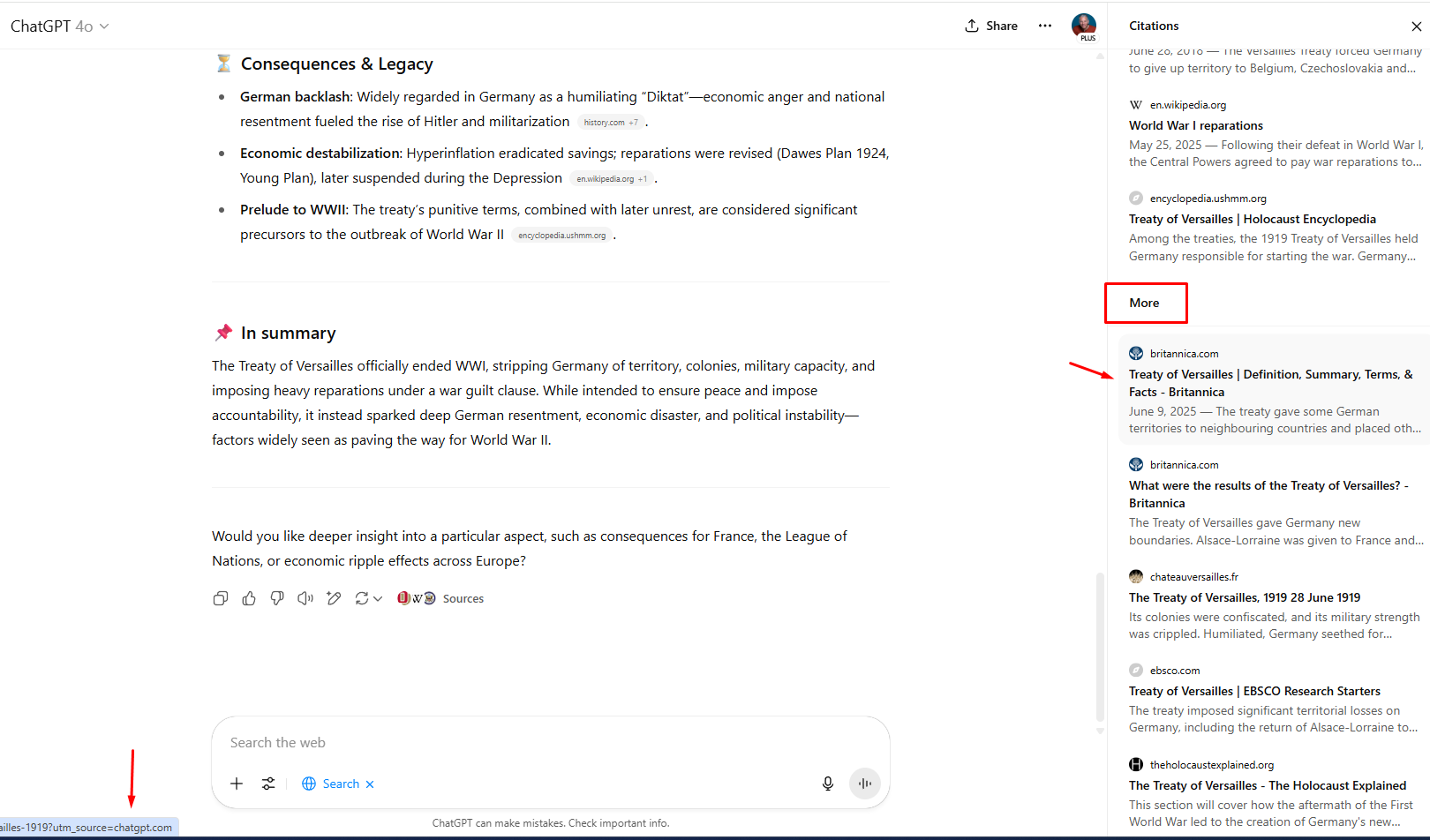ChatGPT Now Sends Trackable Traffic with UTM Parameters
 Written by Sanjay Kumar Monu
Written by Sanjay Kumar Monu
Heads-up to marketers and SEOs: You’re about to notice a new referrer popping up in your traffic reports utm_source=chatgpt.
OpenAI has quietly updated how outbound links from ChatGPT are tracked. Specifically, links shown under the “More” section in the source panel now contain UTM parameters.
That change could mark a big shift in how ChatGPT-generated traffic appears in GA4 and other analytics platforms.
What Changed?
Previously, ChatGPT provided citations with direct hyperlinks, no tracking parameters, no referral insight.
Now, links listed under the “More” section (which appears when you expand the source list in ChatGPT’s UI) include UTM tracking like this:
You can see this in action in the screenshot below, where hovering over a Britannica source link reveals the new UTM tag.

Image Source: Glenn Gabe on X (https://x.com/glenngabe/status/1933511294268645709)
Why This Matters for Marketers
If you’re managing SEO, content, or traffic attribution, this tiny tweak unlocks big benefits:
Measurable Traffic from ChatGPT
For the first time, GA4 will start attributing traffic directly to ChatGPT as long as users click from the “More” source section.
Check your GA4 under:
- Reports > Acquisition > Traffic acquisition
- Set Default Channel Grouping or Session source/medium to include
chatgpt
Better ROI Reporting on Featured Content
If your site is cited frequently by ChatGPT (especially via scraped summaries or Wikipedia-style sources), you can now track whether it’s driving meaningful traffic—not just visibility.
New Channel Opportunity
This is an early indicator that ChatGPT-as-a-referrer is growing. Just like we once watched traffic from DuckDuckGo or Reddit evolve, ChatGPT may soon deserve its own referrer group.
What to Expect in Your Data
Some early predictions based on this update:
- Small but noticeable spikes in referral traffic from
chatgpt - Visitors with high dwell time (due to deep intent)
- Session source recorded as
chatgpt.com / referralorchatgpt / organicdepending on how analytics parse it
If you use Looker Studio or a custom dashboard, consider adding a filter to track utm_source=chatgpt.
How to Capitalize on This
- Monitor your citations: Are your blog posts, guides, or glossary pages appearing in ChatGPT answers?
- Track ChatGPT links in GA4: Use UTM filters or create a dedicated segment.
- Optimize for LLM visibility: Use structured content, FAQ sections, and schema to increase chances of being cited.
While this change is small but it is important. By adding UTM parameters to “More” sources, OpenAI just gave us a peek behind the curtain of AI-driven traffic.
It’s now possible to prove that your brand is being discovered (and clicked on) from ChatGPT.
If you see an uptick in chatgpt traffic—now you know why.
Author

Sanjay Kumar Monu
A Search Engine Optimization Specialist taming the elusive search engine algorithms for over 7+ years now. He have created some pretty darn impressive SEO projects. While not busy dominating the search engine rankings, you can find his nose buried in the latest SEO trends, reading all the juicy details and identifying ways to take my SEO game to the next level.
Related
- How to Make Your Website Appear in ChatGPT Shopping Assistant?
- How to Position Your Brand in Google AI Overviews Search
- Which Websites Do AI Cite Most? Insights from Semrush 2025
- Why Building Communities on Reddit and Quora Important?
- How Google’s AI Overviews Decide What Gets Clicked: Lessons for Content Creators in 2025